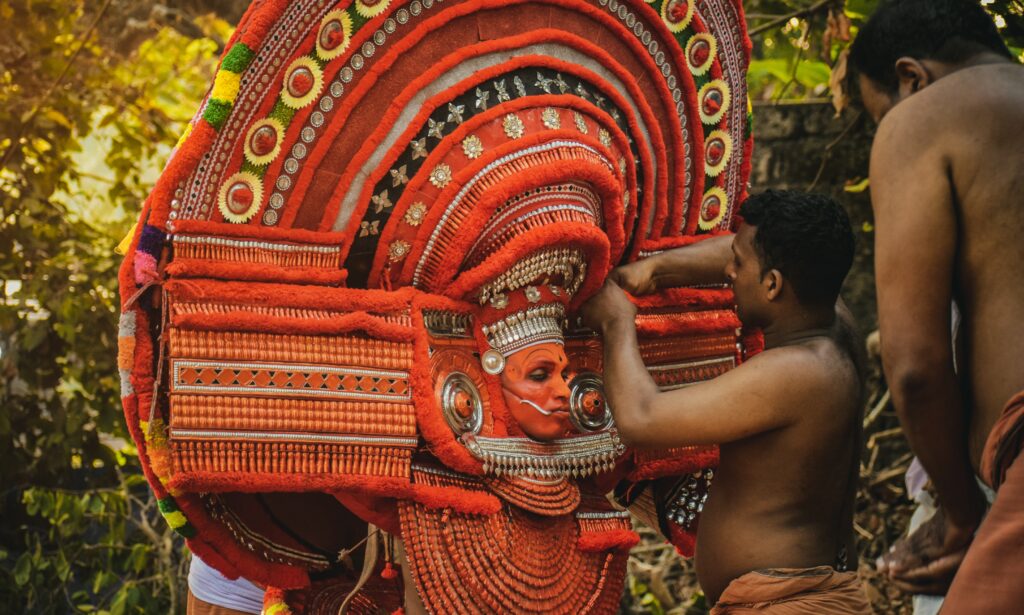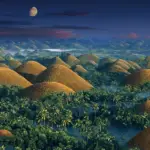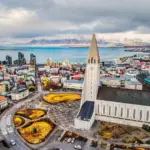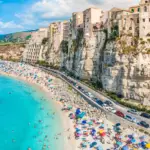
The Magic of Kerala: An Overview
Kerala India – enveloped by lush beauty and intertwined between lush green hills, serene beaches and the famous backwaters, Kerala is a hidden treasure in southern India. Known as "God's Own Country," this region enchants visitors with its rich history, vibrant culture, and unique experiences.
Located on the Malabar Coast of western India, Kerala is bathed by the waters of the Indian Ocean, providing a tropical atmosphere that captivates all who visit. Kerala is a land of fascinating contrasts.
The dynamics modernity coexists harmoniously with the ancients Traditions and customs preserved over the centuries. This prosperous region has historically been an important trading center for valuable spices such as black pepper, cardamom, and cloves, attracting traders from around the world.
However, Kerala is not only distinguished by its economic prosperity; its importance historical and cultural are equally remarkable. With a heritage rooted in ancient civilizations such as the Cheras (an ancient Dravidian kingdom), Kerala has witnessed the flow of cultural influences over the centuries from the Arab, European, and Asian worlds.
Geographical location of Kerala in India
Kerala is a state located on the southwest coast of India. Geographically, it lies between latitudes 8°18′ and 12°48′ North and longitudes 74°52′ and 77°24′ East. It is bordered to the north by the state of Karnataka, to the east by Tamil Nadu, and to the west by the Arabian Sea.
Its coastline stretches for approximately 580 km, offering an abundance of stunning beaches and coastal landscapes. The region is blessed with a diverse geography that includes mountain ranges, vast coastal plains, and the lush rainforest of the Western Ghats.
The Western Ghats are a massive mountain range that spans much of the state, creating a spectacular backdrop for visitors. Kerala also boasts a unique feature known as backwaters—an intricate network of interconnected canals, lakes, and rivers that meander throughout the state.

natural landscapes, including beaches, mountains and backwaters
Kerala's beaches are true natural treasures that captivate visitors with their crystal-clear waters, golden sands, and swaying coconut trees. The state's most famous beach is Kovalam Beach, which attracts tourists from all over the world due to its picturesque beauty. Additionally, there's Varkala Beach, known for its impressive cliffs and serene atmosphere, and Marari Beach, which offers an experience quiet and relaxing.
Kerala's mountains are a breathtaking sight. The Western Ghats are home to several mountain ranges, including the popular Munnar Hills.
These hills are famous for their lush tea plantations, stunning waterfalls, and a cool climate that offers a respite from the hustle and bustle of cities. Kerala's backwaters are a unique attraction worth a visit.
Imagine sailing on traditional boats called “houseboats” while enjoying the serene scenery of narrow canals lined with coconut trees. These backwaters are a delightful mix of freshwater from rivers flowing into the sea, creating a diverse ecosystem inhabited by migratory birds, fish, and other aquatic life.

Exploring Kerala's tropical climate and its distinct seasons
Kerala's tropical climate is a distinctive feature. The region experiences high humidity year-round, with average temperatures ranging from 24°C to 33°C.
However, the state experiences two main seasons—monsoon and dry winter. Monsoon season occurs between June and September, when torrential rains transform the landscape into a lush spectacle of verdant vegetation.
It's during this period that the backwaters are at their most splendorous, with refreshing rains raising the water level and creating a tranquil environment. The dry winter, which lasts from November to February, is considered the best time to visit Kerala.
During these months, temperatures are milder and humidity decreases, providing a comfortable climate for exploring the region's diverse landscapes. It's also during this time of year that many colorful festivals take place in Kerala, making it even more vibrant and enchanting for visitors.
Religious Diversity in Kerala – Hinduism, Islam, Christianity and Judaism
Kerala is known for its rich religious diversity, encompassing Hinduism, Islam, Christianity, and even Judaism. The majority of Kerala's population is Hindu, with a significant number of temples scattered throughout the region. Hindus here follow several specific traditions and rituals, such as the worship of the gods Vishnu and Shiva.
Furthermore, Kerala has sizable Muslim communities that practice Islam. Mosques are important landmarks within local towns and villages.
Another significant religion in Kerala is Christianity. The Apostle Saint Thomas is believed to have arrived in India in the 1st century AD, thus establishing a historical link between Christianity and the Kerala region.
Kerala boasts a notable presence of ancient Christian churches, many of them known for their unique architecture. Finally, although small in number today, the Jewish community in Kochi has a fascinating history dating back to the 10th century AD, when Jews arrived on the Malabar Coast.
Popular Festivals like Onam, Vishu and Thrissur Pooram
Kerala is famous for its vibrant festivals that reflect the state's rich culture and traditions. Among these festivals, three stand out: Onam, Vishu and Thrissur Pooram.
Onam is Kerala's most important festival, commemorating the legend of King Mahabali. During this ten-day festival, people decorate their homes with colorful flower carpets and participate in various cultural activities, such as folk dances and traditional sports competitions.
The highlight is the famous Vallamkali (boat race) on the Pampa River. Vishu marks the beginning of the Malabar new year and is celebrated in April.
It is considered an auspicious time to start new ventures. During Vishu, people wake up at dawn to see the “Vishukkani”, a sacred arrangement of auspicious objects that bring good luck for the coming year.
Thrissur Pooram is one of India's most colorful and exciting festivals. Held in the city of Thrissur, it attracts huge crowds every year.
The highlight of this festival is the procession of richly decorated elephants, followed by traditional musical performances known as melams. The vibrant atmosphere and grand rituals make Thrissur Pooram a unique experience.

Traditional arts like Kathakali (dance-drama), Mohiniyattam (classical dance) and Theyyam (ritualistic)
Kerala boasts a rich artistic tradition that has captivated visitors for centuries. One of the most renowned forms is Kathakali, a dance-drama that combines expressive and gestural movements with intense theatrical makeup.
Kathakali artists spend years training to master this complex art form, and their spectacular performances depict epic Hindu stories. Another classical dance form that stands out in Kerala is Mohiniyattam.
This soft and graceful dance form is exclusively feminine, incorporating sinuous movements and delicate facial expressions. Mohiniyattam narrates mythological and historical tales through the dancers' elegant body language.
Theyyam is an intricate ritualistic form of folk art in Kerala. In it, performers transform themselves into divine deities through the use of elaborate masks and colorful costumes.
Theyyam performances are accompanied by traditional music and are believed by the local community to be a means of invoking divine blessings. These traditional artistic expressions play a significant role in preserving Kerala's unique culture by conveying the ancient stories and cultural values to the young generations.

Highlighting the vegetarian cuisine with abundant use of coconut, fresh spices and medicinal herbs
Kerala cuisine is known for its emphasis on vegetarian cuisine, which utilizes a variety of fresh, healthy ingredients. Coconut is an essential ingredient in almost all Keralite dishes, whether in the form of milk, grated coconut, or oil. Using coconut adds a rich, creamy flavor to dishes and adds essential nutrients to the diet.
Besides coconut, fresh spices are another highlight of Keralite cuisine. Kerala is known as the "land of spices," and the most common spices are black pepper, cardamom, cinnamon, and cloves.
These spices are used both to enhance flavor and for medicinal purposes, as many of them have antioxidant and anti-inflammatory properties. Medicinal herbs also play an important role in Keralite cuisine.
Ayurveda, the traditional Indian system of natural medicine, has a strong influence on local cuisine. Many dishes are prepared with herbs such as turmeric, ginger, and curry leaves, which have healing properties and promote overall health.
Typical dishes like Appam
One of the most popular and iconic dishes in Keralite cuisine is appam. It's a fermented pancake made with a combination of rice and coconut milk, resulting in a soft texture and delicate flavor. Appam is often served as a side dish with various stews or gravies, such as the traditional vegetable curry or the famous fish molly.
Another culinary specialty of Kerala is sadya, a complete vegetarian feast served on a banana leaf. Comprising a wide variety of dishes such as aviyal (mixed vegetables), thoran (a coconut stew), sambar (a type of broth), and payasam (a sweet dessert), sadya is enjoyed on special occasions such as religious festivals and weddings.
Conclusion
Keralite cuisine reflects the region's rich cultural heritage and abundant natural resources. The emphasis on vegetarian cuisine using fresh ingredients, exotic spices, and medicinal herbs highlights the connection between food and health in Keralite culture.
Typical dishes like appam and sadya not only satisfy the discerning palates of locals but also delight visitors with their variety of unique flavors and aromas. By experiencing Kerala's delicious cuisine, you'll be immersed in a culinary journey that goes beyond the simple pleasure of eating, offering an authentic cultural experience.
Lucas Wanderlust has a tireless spirit of adventure, always seeking new travel experiences. Fascinated by the world and the possibility of exploring unknown destinations, he fell in love with the sense of freedom and self-discovery that traveling alone provides. With a backpack on his back and a heart open to the unknown, Lucas embarks on exciting journeys, where each destination becomes a unique chapter in his life story. He gives himself body and soul to the magic of solo travel, inspiring others to follow in his footsteps and discover themselves through adventure.







